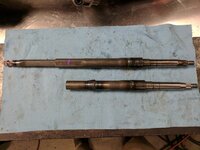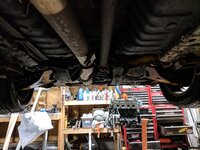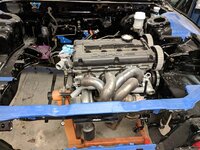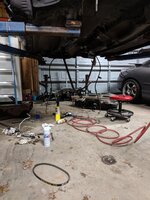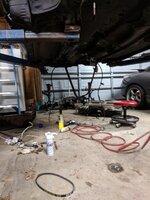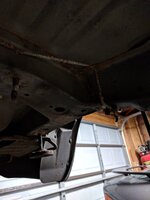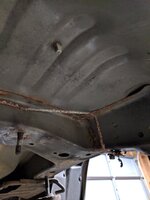wishihadatalon
20+ Year Contributor
- 2,615
- 72
- Aug 18, 2002
-
Grand Rapids,
Michigan
Hi guys, I don't typically post too much about my cars but I've lately been lacking motivation to keep going on the project.
The background for this car is as follows. This car is the first car that my wife purchased on her own. At the time (2004) we were dating and I had a pretty clean 1GA Talon. We set out to find a black 2GA Talon TSI AWD 5spd and we were able to find one in town. The car was bone stock (returned to stock by previous owners) and didn't have any visible rust, the only negative was a very disgusting set of chrome wheels.
After a few years of daily driving in Michigan the car the stock 7 bolt crank walked and the strut towers started showing signs of dreaded strut tower rust. We did a stock 6 bolt rebuild on the car, added a 16g, fp exhaust manifold, megasquirt ecu, supporting fuel mods, and a slight clutch upgrade. On this setup, the car managed a 12.1 at 114mph with a stock side mount intercooler.
Here is a photo of the setup slightly unfinished.

At some point during the daily years, we had a "shop" repair the strut tower rust. When we received the car back, I could tell it wasn't quite right, but we lived with it. As the years went on, we upgraded the turbo charger to an HX40 and I designed and built a front mount that fit between the factory 2GA fog lights. While doing all of this, the tower rust returned. After trapping 101mph in the 1/8 @3300lbs with the stock motor, finding the limits of the Centerforce dual friction clutch, and poking a hole in the strut towers, I decided it was time to tear it down.
Here are the last pictures I have of it


The background for this car is as follows. This car is the first car that my wife purchased on her own. At the time (2004) we were dating and I had a pretty clean 1GA Talon. We set out to find a black 2GA Talon TSI AWD 5spd and we were able to find one in town. The car was bone stock (returned to stock by previous owners) and didn't have any visible rust, the only negative was a very disgusting set of chrome wheels.
After a few years of daily driving in Michigan the car the stock 7 bolt crank walked and the strut towers started showing signs of dreaded strut tower rust. We did a stock 6 bolt rebuild on the car, added a 16g, fp exhaust manifold, megasquirt ecu, supporting fuel mods, and a slight clutch upgrade. On this setup, the car managed a 12.1 at 114mph with a stock side mount intercooler.
Here is a photo of the setup slightly unfinished.
At some point during the daily years, we had a "shop" repair the strut tower rust. When we received the car back, I could tell it wasn't quite right, but we lived with it. As the years went on, we upgraded the turbo charger to an HX40 and I designed and built a front mount that fit between the factory 2GA fog lights. While doing all of this, the tower rust returned. After trapping 101mph in the 1/8 @3300lbs with the stock motor, finding the limits of the Centerforce dual friction clutch, and poking a hole in the strut towers, I decided it was time to tear it down.
Here are the last pictures I have of it



 Give you credit where credit is due though. Patience , persistence,NICE hell of a job!
Give you credit where credit is due though. Patience , persistence,NICE hell of a job!

